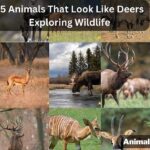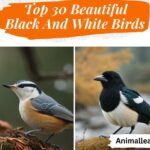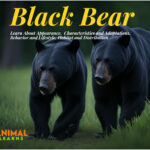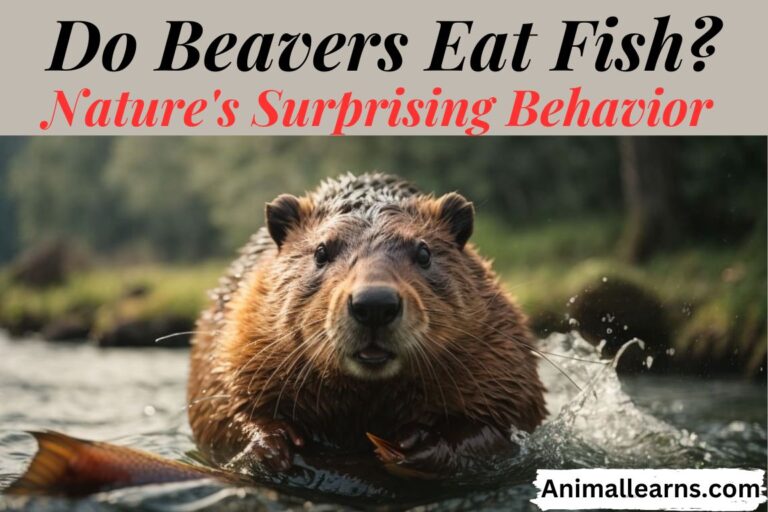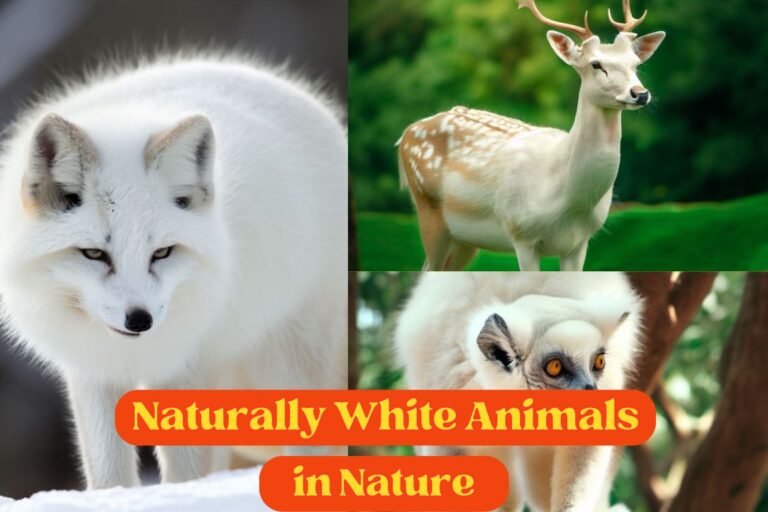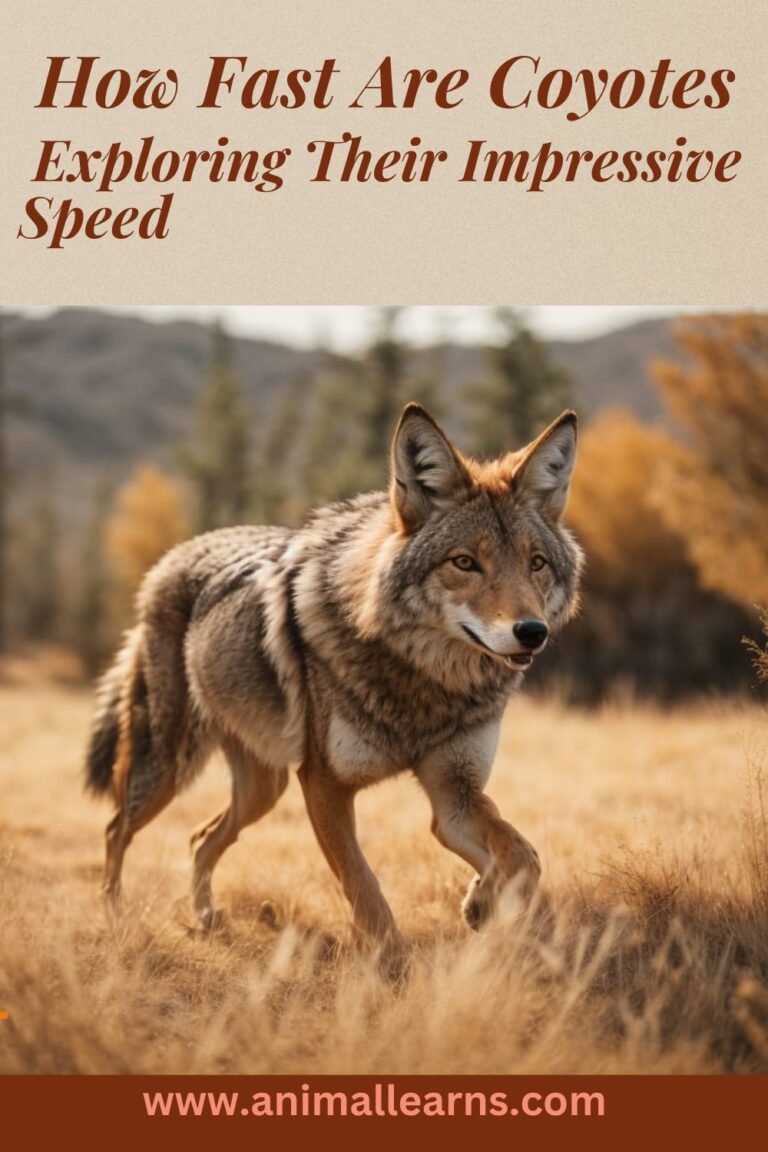Moose vs Elk: A Visual Comparison
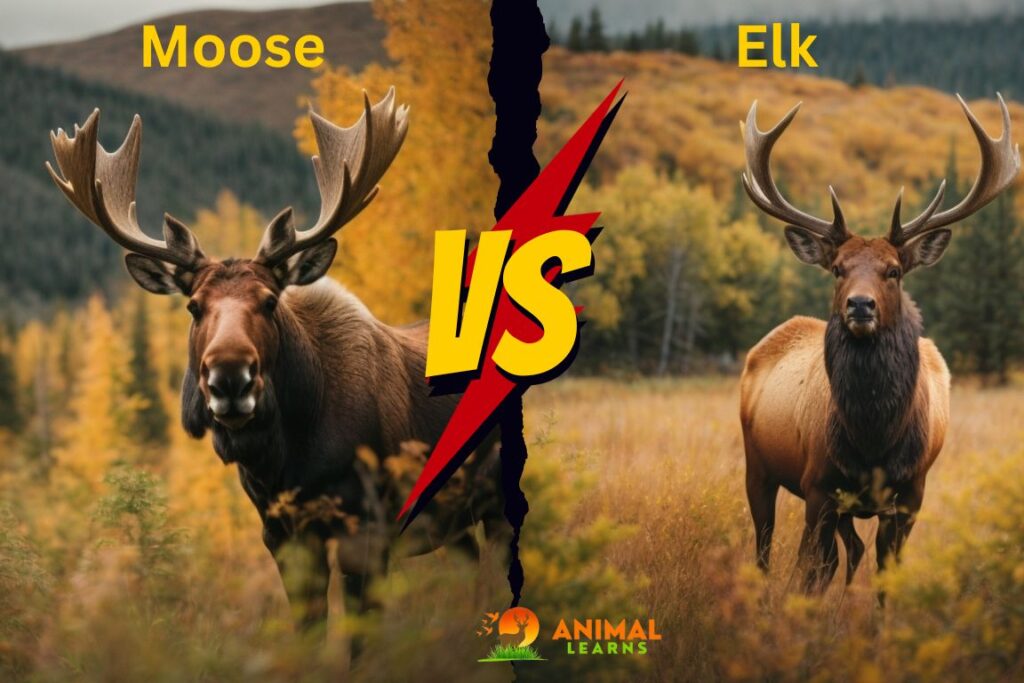
| Information | Moose (Alces alces) | Elk (Cervus canadensis) |
|---|---|---|
| Scientific Name | Alces alces | Cervus canadensis |
| Size | Up to 7 feet at the shoulder | 4.5 to 5.5 feet at the shoulder |
| Weight | 850 to 1,600 pounds (varies by gender and subspecies) | 500 to 1,100 pounds (varies by gender and subspecies) |
| Color | Dark brown to black with a light grayish face | Light brown with a cream-colored rump |
| Grouping | Solitary, except during mating season | Form herds, especially during mating season |
| Location | Social animals forming herds, particularly during the rut (mating season) | Varied habitats, including open woodlands and grassy plains |
| Predators | Wolves, bears, and humans | Predation primarily by wolves and bears |
| Lifespan | 15 to 20 years | 10 to 15 years |
| Nose and Throat | Large, bulbous nose with a dewlap (skin flap) | Smaller, less prominent nose and no dewlap |
| Social Structure | Solitary, minimal social interaction | Social animals form herds, particularly during the rut (mating season) |
Moose vs Elk have long been compared. They both have an intimidating appearance, towering size, and tremendous antlers. Elk, referred to as wapiti, awe with their regal presence and impressive antler racks, while moose, perhaps the largest living member of the deer family, command attention with their towering size and intimidating antlers.
For decades, these two popular animals have captured the curiosity of nature lovers, academics, and environmentalists alike. They serve to represent images of the wild, encapsulating the raw splendor of our natural surroundings.
moose vs elk vs deer
Contents
- 1 moose vs elk vs deer
- 2 Moose vs Elk Size and Body Shape Comparison
- 3 Weight
- 4 Antlers: Moose vs Elk
- 5 Moose and Elk Diet
- 6 Moose Vs Elk Habitat
- 7 Moose and Elk Behavior
- 8 Moose and Elk Tracks, Footprints, and Scat
- 9 Interesting Facts About Moose Vs Elk
- 10 The Battle of the Sexes: Elk vs Moose Female
- 11 Moose vs Elk Fight: Who Would Win?
- 12 Moose vs Elk in Different Geographical Locations
- 13 Are Elk or Moose More Dangerous?
- 14 FAQs
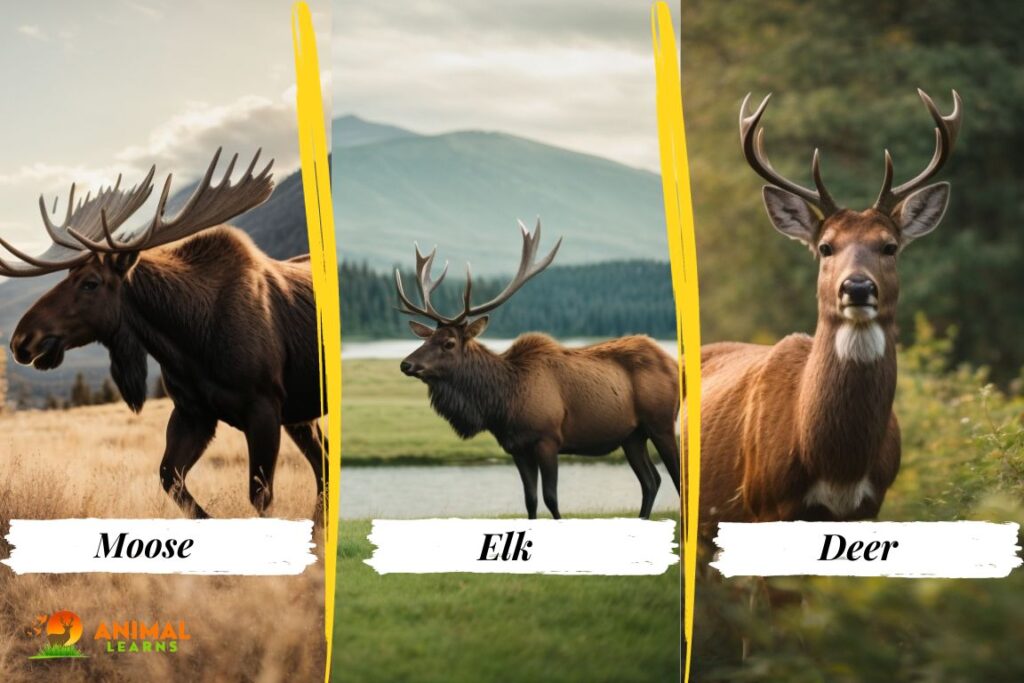
Three recognizable species of the Cervidae family—the moose, elk, and deer—each with unique traits and ecological functions. They have historically been important to North American nature and culture.
Northern woodlands, marshes, and tundra habitats have been home to moose, which are distinguished by their enormous size and huge antlers. Elk are frequently seen in broad forests and grassy plains because of their speed and rutting bugling cries.
In North America, deer, a diversified group that includes species like the white-tailed and mule deer, are common and renowned for their versatility. These three species weave a fascinating tapestry of North American wildlife, adding to the continent’s rich natural legacy.
Moose vs Elk Size and Body Shape Comparison
Adult moose can reach heights of up to 7 feet at the shoulder, and their bodies are distinguished by long, slender legs and a hump on their shoulders. Moose have a tall, heavy-set appearance, and their body proportions are adapted for navigating through dense forests and wetlands.
Elk are noticeably smaller and more maneuverable than moose, although still being a sizeable animal. Elk are more compact than moose, standing between 4.5 and 5.5 feet at the shoulder on average.
Elk can travel quickly across their favored environments, such as grassy plains and open forests, due to their sleeker, slimmer body form and shorter legs.
Weight
When it comes to the weight of moose vs elk, there are noticeable differences between these two impressive cervids. The moose, known for its colossal size, typically outweighs the elk. Adult moose can weigh anywhere from 800 to 1,500 pounds (360 to 680 kilograms), with variations among different subspecies and genders.
On the other hand, elk, while still substantial animals, are generally lighter in comparison. An adult male elk, also known as a bull elk, typically ranges from 600 to 1,000 pounds (270 to 450 kilograms), with the heaviest recorded individuals nearing the upper limit of this range.
Antlers: Moose vs Elk
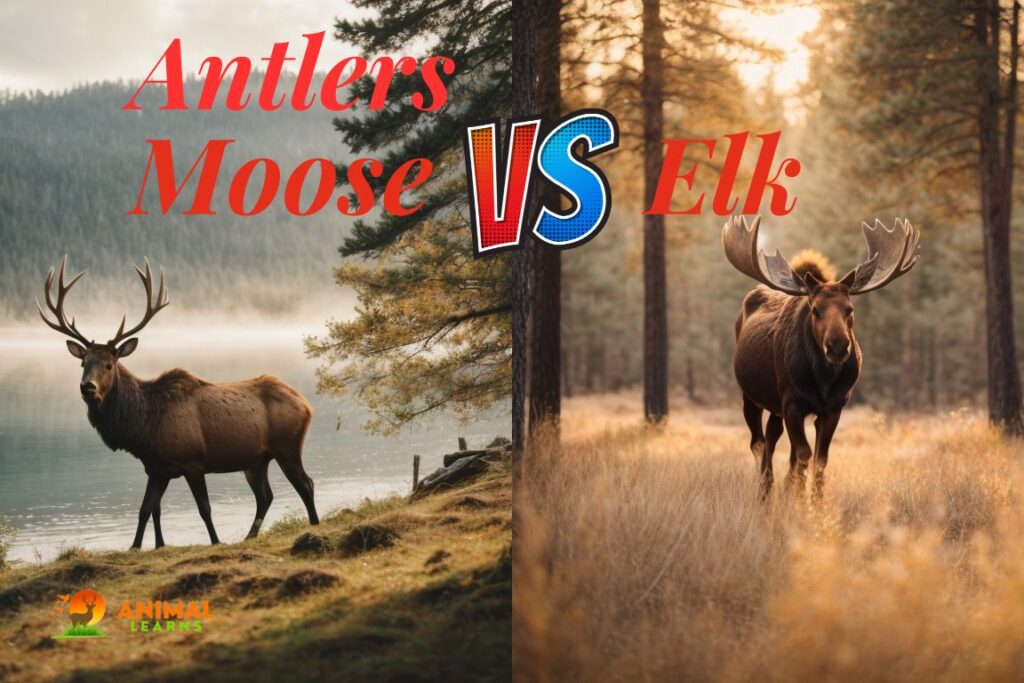
Moose Antlers
Moose antlers are a symbol of the magnificence of nature. These huge limbs, which rank among the biggest in the animal kingdom, have a variety of functions. Moose fight fiercely to gain control during the mating season, using their antlers as weapons.
Antlers on a mature male moose can reach anywhere between 4.5 and 6.5 feet (1.4 and 2 meters), on average. It is possible for moose antlers to be much larger than these measures, with some animals having antlers that are at least 7 feet (2.1 meters) long.
Elk Antlers
Elk antlers are just as intriguing as moose antlers, although they are somewhat different. Elk antlers often tend to be thin and vertical, as opposed to the flat, palmate moose antlers.
They go through yearly changes, starting in the spring with a smooth, velvety coating that aids in their quick expansion. Elk antlers harden by late summer and develop into powerful weapons for fights between bull elk during the rut.
Although exceptional individuals may have greater antlers that exceed these lengths, adult male elk normally have antlers that can reach 4 to 5 feet (1.2 to 1.5 meters) from tip to tip. It’s crucial to remember that elk antler size can vary from location to region and can also depend on the individual elk subspecies.
Moose and Elk Diet
An intriguing component of moose and elk’s ecological functions is their dietary choices. Moose, known for their herbivorous tendencies, like to live in water areas and mostly consume woody plants, aquatic plants, and shrubs as food.
Contrarily, elk display a more varied diet that includes grasses, forbs, and woody browsing. Even though both species favor plants, the complex interactions between their food preferences and their unique environments provide insight into their adaptations and functions in the natural world.
Moose Vs Elk Habitat
Moose
- Moose may thrive in boreal forests in both North America and Eurasia.
- They prosper when there are lots of wetlands and water sources.
- Riparian areas, marshes, and swamps are frequent habitats for moose.
- They prefer locations with low undergrowth and lots of forage, which is why there is little vegetation.
- Moose are renowned for being able to survive long winters.
Elk
- Elk are frequently seen in wooded regions, particularly on the borders of woods.
- They frequently visit wide grasslands and meadows.
- Elk are known to live in hilly areas, such as the Rockies.
- They thrive in environments with a mixture of grasslands, woodlands, and open areas.
- Compared to moose, elk often favor warmer temperatures.
Moose and Elk Behavior
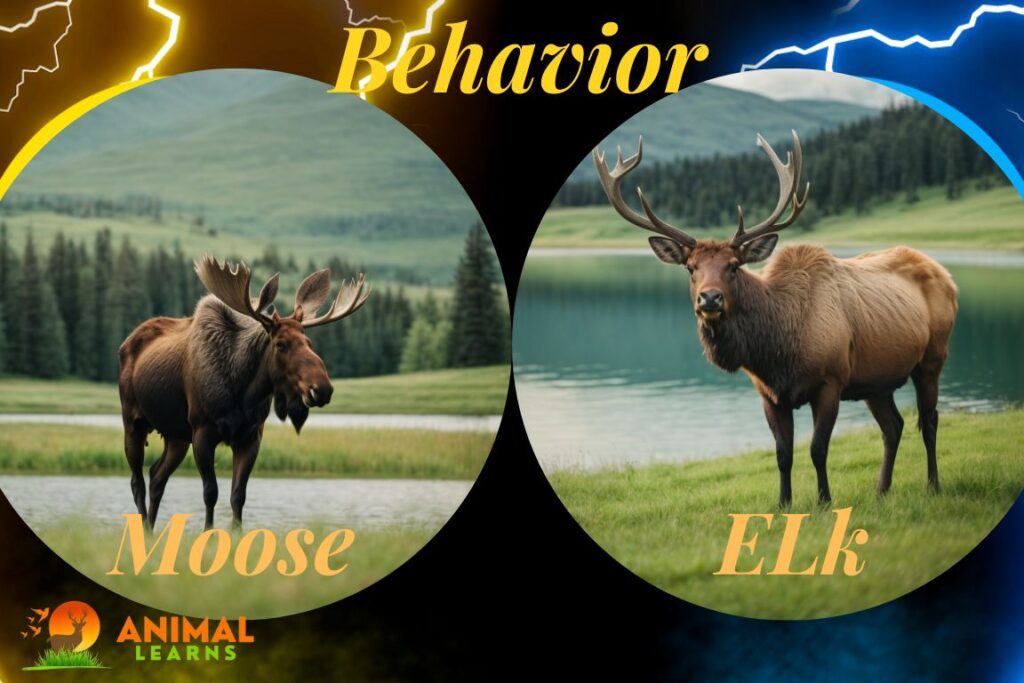
When it comes to the comparison of moose vs elk, there are significant behavioral distinctions. Moose are primarily solitary creatures, and their solitary nature fits with their vast size and requirement for an abundance of feed.
They frequently prefer to browse and graze alone and are more sedentary. Elk, on the other hand, are more gregarious animals that form herds all year long, but especially during the rut, or mating season, when their interactions are characterized by loud bugling cries and theatrical displays.
Elk’s social dynamics are essential to their behavior and survival and help them adapt to open surroundings.
Moose and Elk Tracks, Footprints, and Scat
Understanding moose and elk tracks, footprints, and scat is crucial to understanding these magnificent creatures. Elk tracks are wider and more muscular, whereas moose tracks are recognizable by their size. Analysis of their excrement provides useful information on nutrition and health, assisting conservation efforts.
Interesting Facts About Moose Vs Elk
Moose
- The biggest members of the deer family are moose (Alces alces).
- Their unusual palmate antlers, which may reach a height of 6 feet, are well recognized.
- The majority of moose’s diet consists of water plants, twigs, and other vegetation.
- These animals are very adaptive and may live successfully in a variety of environments, such as forests, marshes, and tundra.
- The single moose can become violent when provoked or during the mating season, despite the fact that they are typically calm.
- Moose are known to dip underwater to eat aquatic vegetation and have strong swimming abilities.
- There are several places where moose are known as “swamp donkeys.”
Elk
- One of the most prevalent species of deer in North America is the elk (Cervus canadensis), a big herbivore.
- They have large, branching antlers that may reach a length of four feet.
- Due to their gregarious nature, elk frequently gather in herds, especially during the rutting (mating) season.
- They are renowned for their agility and are capable of negotiating difficult terrain and leaping over tall fences with ease.
- Elk are grazers and consume forbs, grasses, and shrubs.
- Elk population size and behavior in Yellowstone National Park have a big influence on the ecology and wolf population.
- Elk utilizes a distinctive bugling cry during the rut to communicate with one another.
The Battle of the Sexes: Elk vs Moose Female
The contrast between female moose and female elk is a matter of great curiosity in the fascinating field of animal biology. The female moose, or cow, is an essential component of the complex web of environmental dynamics, standing out for her sizeable size and sturdy structure.
The female elk, in comparison, has a more slender build whilst unquestionably having a graceful demeanor. Both females are crucial to the survival of their respective species, and examining how they vary reveals the subtleties of adaptation in the natural world.
Moose vs Elk Fight: Who Would Win?
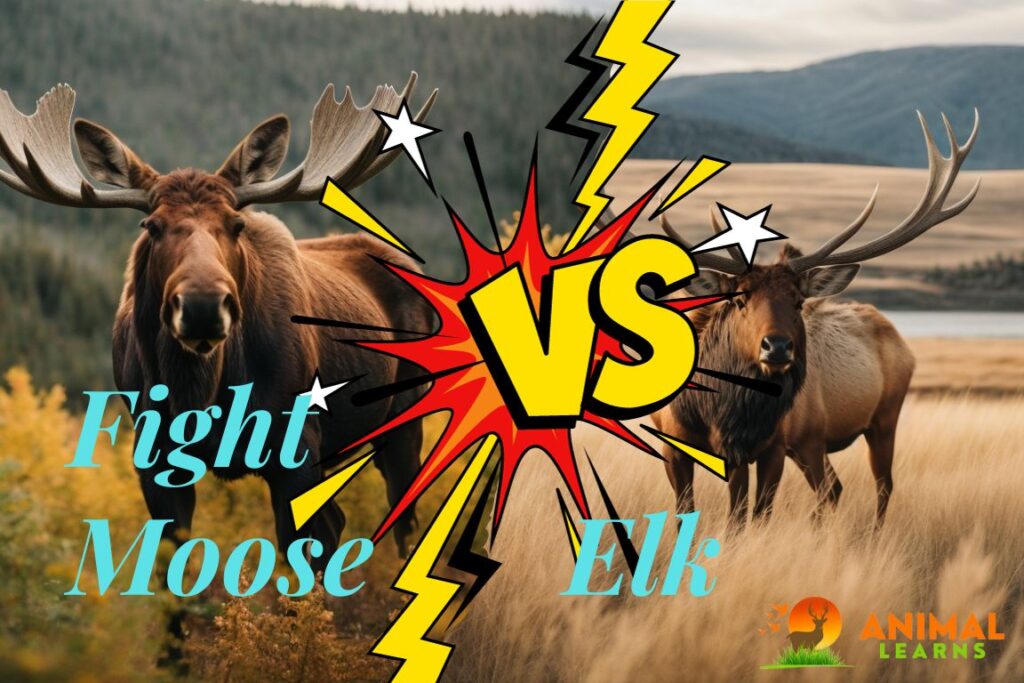
A potential conflict between moose vs elk is an intriguing idea to explore in the world of animal conflicts. Due to their distinct adaptations and physical strength, these two majestic beasts are each fearsome in their own right.
The moose is extremely strong and bulky, and it is well-known for its enormous size and fearsome antlers. The elk, on the other hand, is renowned for its speed and agility and has extraordinary stamina.
Moose vs Elk in Different Geographical Locations
In Arizona, moose and elk are present, providing a rare opportunity to encounter these gorgeous animals in the wild. These creatures face unique difficulties in harsh desert environments, making their adaptations and survival techniques all the more fascinating.
Moose vs elk, on the other hand, are essential components of the ecosystems in places like Sweden and Canada.
| Geographic Location | Moose Presence | Elk Presence | Unique Characteristics |
| Arizona | Limited | Present | Challenges and Adaptations |
| Sweden | Abundant | Occasional | Regional Behavior |
| Canada | Abundant | Abundant | Distribution and Behavior |
| Grand Canyon | Occasional | Present | Unique Environmental Factors |
| Norway | Abundant | Occasional | Regional Distribution |
| New Mexico | Occasional | Present | Environmental Challenges |
| Colorado | Abundant | Occasional | Regional Variations |
Are Elk or Moose More Dangerous?

Elk vs moose: Both creatures should be treated with respect and caution since they are wild. Moose are typically seen as being more unpredictable and capable of acting aggressively, particularly during the rutting season when bull moose can get angry and possessive. They have a reputation for charging at danger.
Elk are also potentially hazardous, especially when they are in their rutting season when the bulls may charge. Elk are also capable of defending their young.
FAQs
Are moose and elk the same species?
No, they are not. Moose and elk are different species, each with its own unique characteristics and behaviors.
What is the primary size difference between moose and elk?
Moose are significantly larger, with adult males standing up to 7 feet tall at the shoulder, while elk typically measure 4.5 to 5.5 feet at the shoulder.
Do moose and elk share the same habitat?
While they can overlap in certain regions, moose tend to favor wetlands and dense forests, while elk are often found in open woodlands and grassy plains.
Are moose and elk social animals?
Elk are more social and tend to form herds, especially during the rut (mating season), whereas moose are typically solitary creatures.
Do moose and elk have similar antler characteristics?
No, their antlers differ significantly. Moose have broad, palmate antlers, while elk have more slender, branched antlers.



